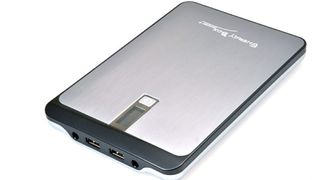giriiş
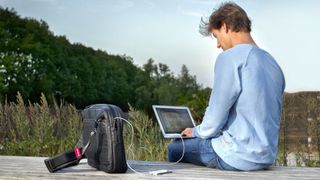
Piller, modern dünyanın itici gücü ve Aşil Topuğu'dur - mobil cihazlarla inanılmaz şeyler yapmamızı sağlarlar, ancak istediğimiz kadar uzun ömürlü olmazlar. Yine de umutsuzluğa kapılmayın, pillerinizin daha uzun süre dayanmasını sağlamak için atabileceğiniz birkaç basit adım vardır.
Bu makalede, siz dışarıdayken bir dizüstü bilgisayarı veya tableti güçlü bir şekilde çalışır durumda tutmak için kullandığımız favori 14 yöntemi ayrıntılarıyla anlatacağız.
Sürekli şarjda tutmayın

Piller, sürekli deşarj ve yeniden şarjdan fayda sağlamaz ve bazı durumlarda üretici bunu önlemek için bir yardımcı program bile sağlar. Örneğin, Sony ve Lenovo, pilin ömrünü uzatmak için şarjı %80 ile sınırlıyor. Yolculuktan önce tam şarj elde etmek için, bir Sony cihazında limiti devre dışı bırakın; bu, Vaio Kontrol Merkezi > Güç ve Pil'e gidip Pil Bakımını kapatmak anlamına gelir. Lenovo makinelerinde Enerji Yönetimi'ndedir.
Dolu veya boş bırakmayın
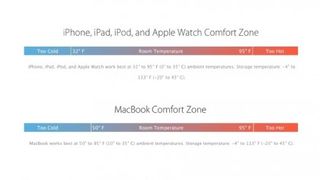
Cihazınızı bir süre kullanmayacaksanız, sıfır şarj veya tam şarj ile bırakmayın; bu seçeneklerin her ikisi de pilinizin ömrünü kısaltabilir (ve ikisi arasında, sıfır şarj en kötüsüdür, çünkü piliniz bitmeye çok alışırsa tekrar şarj olmayabilir). Cihazı bir süreliğine saklayacaksanız Apple gibi üreticiler pilli veya pille çalışan cihazları yarı şarjlı saklamanızı tavsiye ediyor.
Ne zaman bittiğini bil
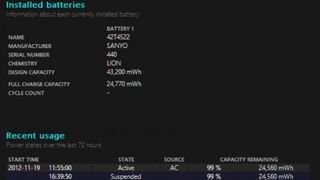
Piller sonsuza kadar dayanmaz ve eskidikçe daha az verimli hale gelirler. Windows (yeni sekmede açılır), pilinizin sağlığı ciddi şekilde kötüyse sizi uyarır, ancak gizli bir Windows komutunu kullanarak bunu kendiniz de kontrol edebilirsiniz. Bunu yapmak için Komut İstemi'ni başlatın ve Yönetici olarak çalıştırın. Şimdi "power cfg /batteryreport" yazın ve Enter'a basın.
Windows şimdi C: sürücünüzün kökünde Battery-Report adlı bir HTML belgesi oluşturacak ve burada iki önemli bilgi biti var: pilin ne kadar güç depolaması gerektiği anlamına gelen tasarım kapasitesi ve tam şarj kapasite, aslında elde ettiğiniz şey bu. İkisi arasında çok büyük bir fark varsa, yeni bir pil zamanı.
Pili yeniden kalibre edin
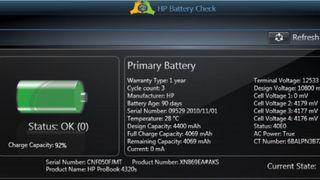
Don't assume that an unhappy battery is a broken battery – it could be that your battery needs to be recalibrated (this doesn't apply to recent Macs, but it does to older ones). An incorrectly calibrated battery can tell Windows the wrong information about its remaining charge, and it might even shut your system down without warning.
Many manufacturers provide utilities to do recalibration for you, but if not it's an easy DIY job: fully charge it, let it sit for a while to cool down, then go into power options and set critical battery level to 5% and critical battery action to Hibernate. Run the computer until it shuts down, let it sit for a few hours and then charge it back up.
Choose a low-power plan

In Windows 8.1 (but not RT 8.1) you can choose the Balanced or Power Saver power plans to reduce battery drain. Balanced attempts to guess when you need power and when you don't, while Power Saver prioritises battery saving over performance. You can also tweak the plans to fully customise your PC's power saving settings.
Apple's power management settings are in System Preferences > Energy Saver. They aren't as comprehensive as the preferences in Windows, but Apple has done a lot of tinkering under the hood of OS X to improve battery life on Macs.
Turn it down
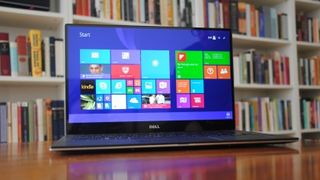
The screen is a major battery killer, because of course it's essentially a big collection of lights. That means turning the brightness down can make a big difference to the amount of power the display consumes.
If your device automatically adjusts the screen brightness to suit ambient lighting conditions, try interfering – in our experience, manufacturers' ideas of correct brightness are often overly bright, especially when we're working indoors. Don't bother with a screensaver, either, just get your device to sleep when it's idle instead of using power to display pretty pictures.
Unplug your accessories
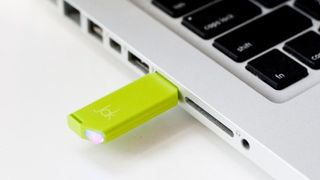
If your USB devices don't have their own chargers that means they're bus powered, so they're getting their juice from your device. Unplug anything you don't need right now – remember that devices don't need to be in use to draw power. It's particularly important with older USB Wi-Fi adapters, which can draw a surprising amount of power. More recent 801.11n and 802.11ac adapters are more energy efficient, but they'll still draw power if they're connected.
Turn off things you don't need
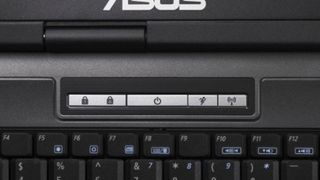
PC cards, flash drives, Wi-Fi radios, mobile dongles… once again, if you don't need them just now, unplug or disable them. Anything that's communicating with your PC's innards needs power to do so, and radios such as Wi-Fi and Bluetooth are notorious repeat offenders.
In some cases laptop firms provide hardware switches that can turn the radios on and off, but if they don't Windows enables you to do it via software. In Windows 8, press the Windows key + C and navigate to: Settings > Change PC Settings > Wireless.
Go offline

Our devices are designed on the assumption that we'll always have an internet connection, and that means all kinds of apps and services will use the connection in the background – cloud storage updates, apps checking for newer versions, social media plugins and so on. Going completely offline – or entering Airplane Mode on a tablet – stops that background baggage.
Also remember to keep your antivirus (opens in new tab) and anti-malware software up to date, as dodgy downloads are notorious for using internet connections without users' knowledge or permission.
Do less
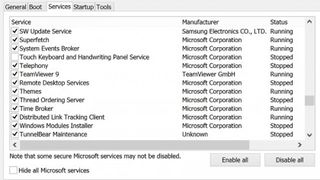
The more you demand from your device, the more power it'll need to do it – so the less of a load you can put on your system the longer it'll run for. Don't just quit obvious apps – use Windows' System Configuration Utility (MSCONFIG) or Apple's Activity Monitor to spot and stop any resource-hungry services and/or apps that you might not realise were running. Make sure you have enough RAM, too – reading from and writing to RAM is more energy efficient than reading from and writing to disk.
Shove in an SSD
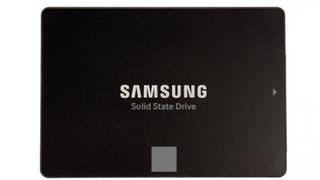
Swapping a hard disk for an SSD isn't hard and could seriously reduce your laptop's power consumption, because SSDs essentially work like RAM rather than mechanically spinning disks.
However, while many SSDs are very frugal with their energy demands, there are big differences between different drives. The lovely people at Anandtech have extensive SSD power consumption benchmarks (opens in new tab) that can help you find the right one. Concentrate on the benchmarks for active, not idle, use, as that's where energy efficiency really matters.
Keep it comfortable

Pretend your laptop or tablet is a dog or a child; don't leave it locked in a car on a hot day. Heat and cold both adversely effect battery lifespan, so you don't want to store them in too hot or too cold conditions. You don't want to use them in overly hot or cold conditions either, because that can have disastrous effects on your device's performance and battery use. As a rule of thumb, if the temperature's uncomfortable for you it's not doing your battery any favours either.
Change your browser
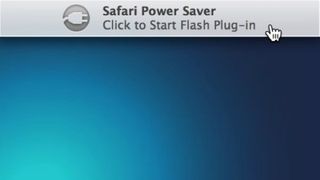
Mavericks veya Yosemite (yeni sekmede açılır) tarafından desteklenen bir Mac kullanıyorsanız ve Google Chrome çalıştırıyorsanız, Apple'ın tarayıcısının güç tüketimini dikkatli bir şekilde optimize ettiği, Google'ın ise yapmadığı saatler kaybediyorsunuz. Gerçek dünyada, Chrome tabanlı göz atma ile Safari'ye bağlı kalma arasında bir ila üç saatlik bir fark gördük, bu nedenle şarj aletinden uzaktayken Apple'ın yazılımını kullanmak mantıklı. Fark özellikle Yosemite'de belirgindir.
yedek taşımak
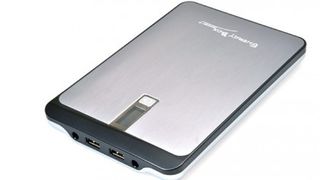
Bu her zaman mümkün değildir – örneğin, son Apple dizüstü bilgisayarlarda ve çoğu tablette değiştirilebilir pil yoktur – ancak herhangi bir olasılığa hazırlıklı olmak istiyorsanız ve dizüstü bilgisayarınız bunu destekliyorsa, yedek bir pile yatırım yapın.
İdeal olarak, daha iyisini alın; birçok dizüstü bilgisayar, beraberinde gelen pillerden daha büyük, daha uzun ömürlü pilleri kullanabilir. Toplu istemiyorsanız veya dizüstü bilgisayarınız veya tabletiniz pil değiştirmeyi desteklemiyorsa, her zaman harici bir dizüstü bilgisayar pili alabilirsiniz; bunlar genellikle yalnızca dizüstü bilgisayarlar için değil, tabletler gibi USB şarj cihazları için de bağlantı noktalarıyla birlikte gelir.
- Daha uzun ömür ipuçlarına göz atın: Hareket halindeyken telefonunuzun, tabletinizin veya dizüstü bilgisayarınızın pil ömrünü nasıl uzatabilirsiniz (yeni sekmede açılır)
- Ayrıca göz atın: Daha fazla akıllı telefon pili elde etmek için en iyi 5 ipucu (yeni sekmede açılır)
